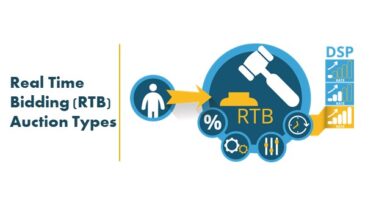What is a Sell-Side Platform (SSP)? How Does It Work?
Sell-side platform (SSP) is technology which connects the publishers to relevant advertisers through ad exchanges. Let’s discuss evolution of online advertising and how it connected to SSPs in the online advertising ecosystem.
Earlier days, publishers used to sell the ad inventory to the advertisers through direct sales by find the finding the relevant advertisers who were willing to display their ads.
As online advertising industry grew, a complete new issue emerged. The direct sales weren’t supporting the publishers to fill the all the available ad inventory, because some ad inventory could end up unsold and opened up an opportunity of intermediary. The publisher was started looking for a technology platform that would effectively sell remnant inventory. That’s where the ad network came in to help the publishers.
Ad network is a company that provides technology platform and serve as an intermediate between publishers and advertisers. Since, increased ad network in the market, the new ad technology platform introduced which is Network Optimizers. These AdTech platforms were responsible to make effective decision to maximize the publisher revenue by selling their ad inventory to the high paid advertisers.
When Real-Time Bidding (RTB) was introduced in the late 2000s, network optimizers transformed into a new technology platform, which is called as sell-side platform (SSP) or supply-side platform.
The SSPs are not only allowing the publishers to sell all the inventories, but they are also key players of RTB process. The publishers can optimize their ad inventories by connecting multiple advertisers through ad exchanges to maximize the revenue.
What is a Sell-Side Platform (SSP)?
A sell-side platform or supply side platform is an ad technology (AdTech) platform used by the publishers to sell, manage and optimize the ad inventory on their websites in an automated and effective way. The SSPs will help the publishers to monetize the display ads, video ads, and native ads on their websites and mobile apps.
The SSPs have enhance their functionalities over the years and have included ad exchange mechanisms to efficiently manage their ad inventory. Also, SSPs are allowing the publishers to connect to DSPs directly instead of connecting through Ad exchanges. This will allow the publishers to eliminate the ad exchanges and connect with advertisers directly to reduce the ad load time.
How Does Sell-Side Platform (SSP) Work?
SSPs can sell the ad inventories in many ways – for example, sell the ad inventory to directly to the ad networks, via direct deals with DSPs and most commonly via RTB auctions.

Here’s a brief overview of how can publishers use the sell-side platforms to sell their ad inventory during Real Time Bidding (RTB).
The publisher makes their ad inventory available on an SSP and invite advertisers to bid based on the user’s data received.
Each time the publisher’s web page loads, an ad request is sent to multiple ad exchanges and sometimes it sends to Demand Side Platforms (DSP) either directly from an SSP or and SSP through the publisher’s ad server.
In case of RTB media buys, many DSPs would place bids to the impressions being offered by the publisher during the auction.
The advertiser will win the bid who is bidding higher amount compared to other advertisers and pay 2nd highest price for the winning impression to serve the ads.
Conclusion: The Sell-Side Platform is a technology that enables the publishers to connect with the advertisers on a real time to sell the ad inventory and maximize the revenue. The AdTech platform is also helping the publishers to connect with various DSPs to efficiently manage their ad inventory. We hope you will get a fair idea about the SSP and how it works in this article. We will publisher a few more articles on advantage, disadvantages, features of SSP, and comparison with DSP, Ad network in the upcoming articles.




